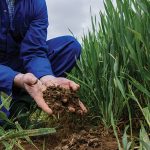It’s right under our feet. We barely notice as we go about our lives, yet it is nothing less than the largest carbon repository among all of Earth’s ecosystems. This distinction is awarded neither to forests nor to the atmosphere, but to our soils. There are around 2,400 billion tons of carbon in the first two













